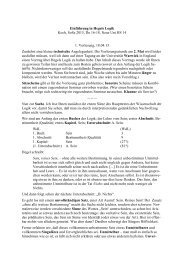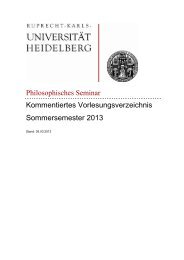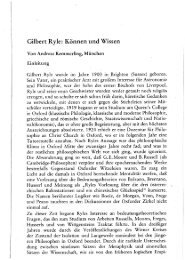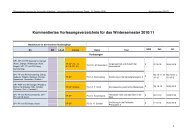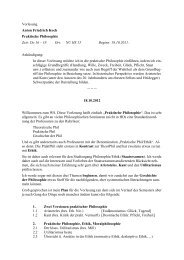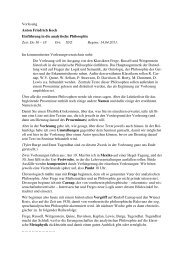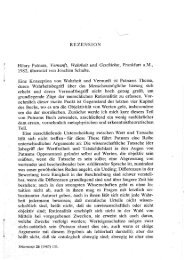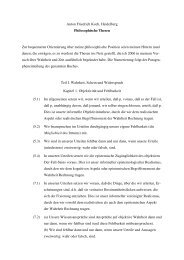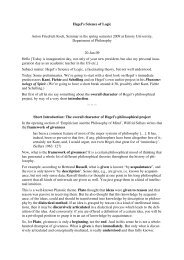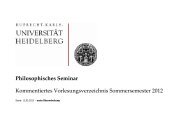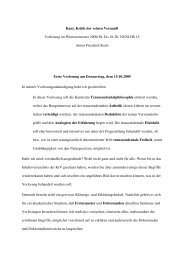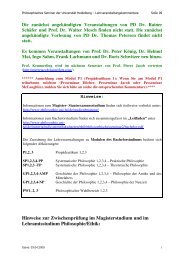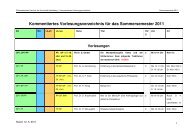KANT'S CRITIQUE OF TELEOLOGY IN BIOLOGICAL EXPLANATION
KANT'S CRITIQUE OF TELEOLOGY IN BIOLOGICAL EXPLANATION
KANT'S CRITIQUE OF TELEOLOGY IN BIOLOGICAL EXPLANATION
You also want an ePaper? Increase the reach of your titles
YUMPU automatically turns print PDFs into web optimized ePapers that Google loves.
54 Antinomies of Reason<br />
tent is particularly important for an understanding of the Critique<br />
of Judgment will be examined in some detail: the Second Antinomy,<br />
which deals with the relation of part and whole, and the Third<br />
Antinomy dealing with causality and freedom. The latter must be<br />
examined primarily because the traditional interpretation, dominant<br />
since Hegel, has considered the antinomy of judgment presented<br />
in the Dialectic of teleological judgment to be merely a repetition<br />
of the Third Antinomy.<br />
Kant himself almost always explicates the structure of the<br />
antinomies on the example of the First Antinomy and compares or<br />
contrasts the others with this. Thus, in order to be able to cite Kant's<br />
own words, I shall have to concentrate on the First Antinomy — I<br />
shall also at least as a sort of digression deal with its content. This<br />
circumstance will on occasion inevitably lead to some somewhat<br />
baroque arguments, for which I would like to apologize in advance.<br />
Finally, a discussion of the highly controversial antinomies does not<br />
occur in a vacuum; there are external constraints that result from<br />
traditions of interpretation and from contemporary discussions of<br />
Kant; there are also distortions that result from the fact that no one<br />
can quite survey the entire literature. I can only take up those problems<br />
which either appear to be substantially interesting from my<br />
own necessarily subjective point of view or else can quantitatively<br />
simply not be overlooked and thus for pragmatic reasons cannot be<br />
ignored, whether or not they are particularly fruitful. For instance,<br />
in the next chapter I shall reject the widespread view that the antinomy<br />
of judgment has anything in common with the Third<br />
Antinomy other than its logical form, as has been asserted by the<br />
dominant interpretations. However, to make an argument against<br />
any special connection, I must of course analyze the Third Antinomy<br />
in some detail.<br />
The "Antinomy of Pure Reason" constitutes the second of the<br />
three formally equal chapters of the second book of the Transcendental<br />
Dialectic. Dialectic is the "specious art" of using — or rather<br />
misusing — logic as an instrument for the acquisition of knowledge<br />
with empirical content. In this sense it is merely a "logic of illusion,"<br />
"a sophistical art of giving to ignorance, and indeed to intentional<br />
sophistries, the appearance of truth" (B86). Within Kant's system<br />
dialectic means the "critique of dialectical illusion" (B86) and is<br />
considered to belong to logic. Kant uses the term "dialectic" in both<br />
senses: as illusion or sophistry and as critique of logical illusion.



